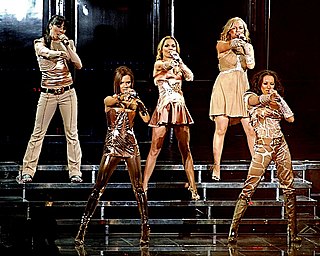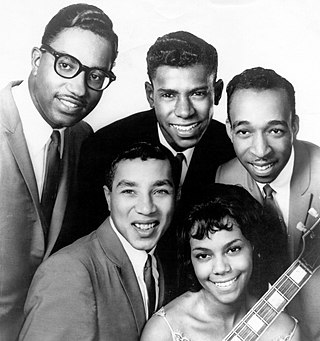Rock is a broad genre of popular music that originated as "rock and roll" in the United States in the late 1940s and early 1950s, developing into a range of different styles from the mid-1960s, particularly in the United States and the United Kingdom. It has its roots in 1940s and 1950s rock and roll, a style that drew directly from the genres of blues, rhythm and blues, and from country music. Rock also drew strongly from genres such as electric blues and folk, and incorporated influences from jazz and other musical styles. For instrumentation, rock has centered on the electric guitar, usually as part of a rock group with electric bass guitar, drums, and one or more singers. Usually, rock is song-based music with a 4
4 time signature using a verse–chorus form, but the genre has become extremely diverse. Like pop music, lyrics often stress romantic love but also address a wide variety of other themes that are frequently social or political. Rock was the most popular genre of music in the U.S. and much of the Western world from the 1950s to the 2010s.
A roots revival is a trend which includes young performers popularizing the traditional musical styles of their ancestors. Often, roots revivals include an addition of newly composed songs with socially and politically aware lyrics, as well as a general modernization of the folk sound.
The music of Finland can be roughly divided into folk music, classical and contemporary art music, and contemporary popular music.
Germany claims some of the most renowned composers, singers, producers and performers of the world. Germany is the largest music market in Europe, and third largest in the world.
The music of the Philippines includes the musical performance arts in the Philippines and the music of Filipinos composed in various local and international genres and styles. Philippine musical compositions are often a mixture of Indigenous styles, and various Asian styles, as well as Spanish/Latin American and (US) American influences through foreign rule from those countries.

British popular music and popular music in general, can be defined in a number of ways, but is used here to describe music which is not part of the art/classical music or Church music traditions, including folk music, jazz, pop and rock music. These forms of music have particularly flourished in Britain, which, it has been argued, has influenced popular music disproportionately to its size, partly due to its linguistic and cultural links with many countries, particularly the former areas of British control such as United States, Canada, and Australia, but also a capacity for invention, innovation and fusion, which has led to the development of, or participation in, many of the major trends in popular music. This is particularly true since the early 1960s when the British Invasion led by The Beatles, helped to secure British performers a major place in development of pop and rock music, which has been revisited at various times, with genres originating in or being radically developed by British musicians, including: blues rock, heavy metal music, progressive rock, punk rock, British folk rock, folk punk, acid jazz, drum and bass, grime, afroswing, dubstep and Britpop.

The earliest traces of Danish music go back to the many twisting Bronze-Age horns or lurs which some experts have identified as musical instruments. They have been discovered in various parts of Scandinavia, mostly Denmark, since the end of the 18th century. Denmark's most famous classical composer is Carl Nielsen, especially remembered for his six symphonies, while the Royal Danish Ballet specializes in the work of Danish choreographer August Bournonville. Danes have distinguished themselves as jazz musicians, and the Copenhagen Jazz Festival has acquired an international reputation. The modern pop and rock scene has produced a few names of note, including MØ, Dizzy Mizz Lizzy, Lukas Graham, D-A-D, Tina Dico, Aqua, The Raveonettes, Michael Learns to Rock, Volbeat, Alphabeat, Safri Duo, Medina, Oh Land, Kashmir, King Diamond, Outlandish, and Mew. Lars Ulrich is the first Danish musician to be inducted into the Rock and Roll Hall of Fame.
Popular music of the United Kingdom in the 1970s built upon the new forms of music developed from blues rock towards the end of the 1960s, including folk rock and psychedelic rock movements. Several important and influential subgenres were created in Britain in this period, by pursuing the limitations of rock music, including British folk rock and glam rock, a process that reached its apogee in the development of progressive rock and one of the most enduring subgenres in heavy metal music. Britain also began to be increasingly influenced by third world music, including Jamaican and Indian music, resulting in new music scenes and subgenres. In the middle years of the decade the influence of the pub rock and American punk rock movements led to the British intensification of punk, which swept away much of the existing landscape of popular music, replacing it with much more diverse new wave and post punk bands who mixed different forms of music and influences to dominate rock and pop music into the 1980s.

British rock describes a wide variety of forms of music made in the United Kingdom. Since around 1964, with the "British Invasion" of the United States spearheaded by the Beatles, British rock music has had a considerable impact on the development of American music and rock music across the world.
Chilean rock is rock music and its corresponding subgenres produced in Chile or by Chileans. Chilean rock lyrics are usually sung in Spanish so can be considered as part of rock en español, although they are sometimes sung in English as well.
Rock music and its subgenres are very popular in Portugal. The history of the Portuguese rock music scene spans several decades.

Music history of the United States includes many styles of folk, popular and classical music. Some of the best-known genres of American music are rhythm and blues, jazz, rock and roll, rock, soul, hip hop, pop, and country. The history began with the Native Americans, the first people to populate North America.

American popular music is popular music produced in the United States and is a part of American pop culture. Distinctive styles of American popular music emerged early in the 19th century, and in the 20th century the American music industry developed a series of new forms of music, using elements of blues and other genres. These popular styles included country, R&B, jazz and rock. The 1960s and 1970s saw a number of important changes in American popular music, including the development of a number of new styles, such as heavy metal, punk, soul, and hip hop.
Dansband, or danseband in Norwegian and Danish, is a Swedish term for a band that plays dansbandsmusik. Dansbandsmusik is often danced to in pairs. Jitterbug and foxtrot music are often included in this category. The music is primarily inspired by schlager, country, rock'n'roll and some swing. The main influence for rock-oriented bands is the rock music of the 1950s and 1960s.

This article includes an overview of the events and trends in popular music in the 1960s.
Bangladeshi rock music, or Bangla rock music, is a style of music in Bangladesh that is derived from British and American rock music, mixed with the Bengali classical and Adhunik musical styles from the 1960s. The genre was introduced in the 1960s by a few bands who began developing a distinctive rock sound. Bangladeshi rock is commonly divided into two categories: East Pakistan rock, and Bangladesh rock. From the 1970s to the 2000s, it was one of the nation's most popular musical genres.





